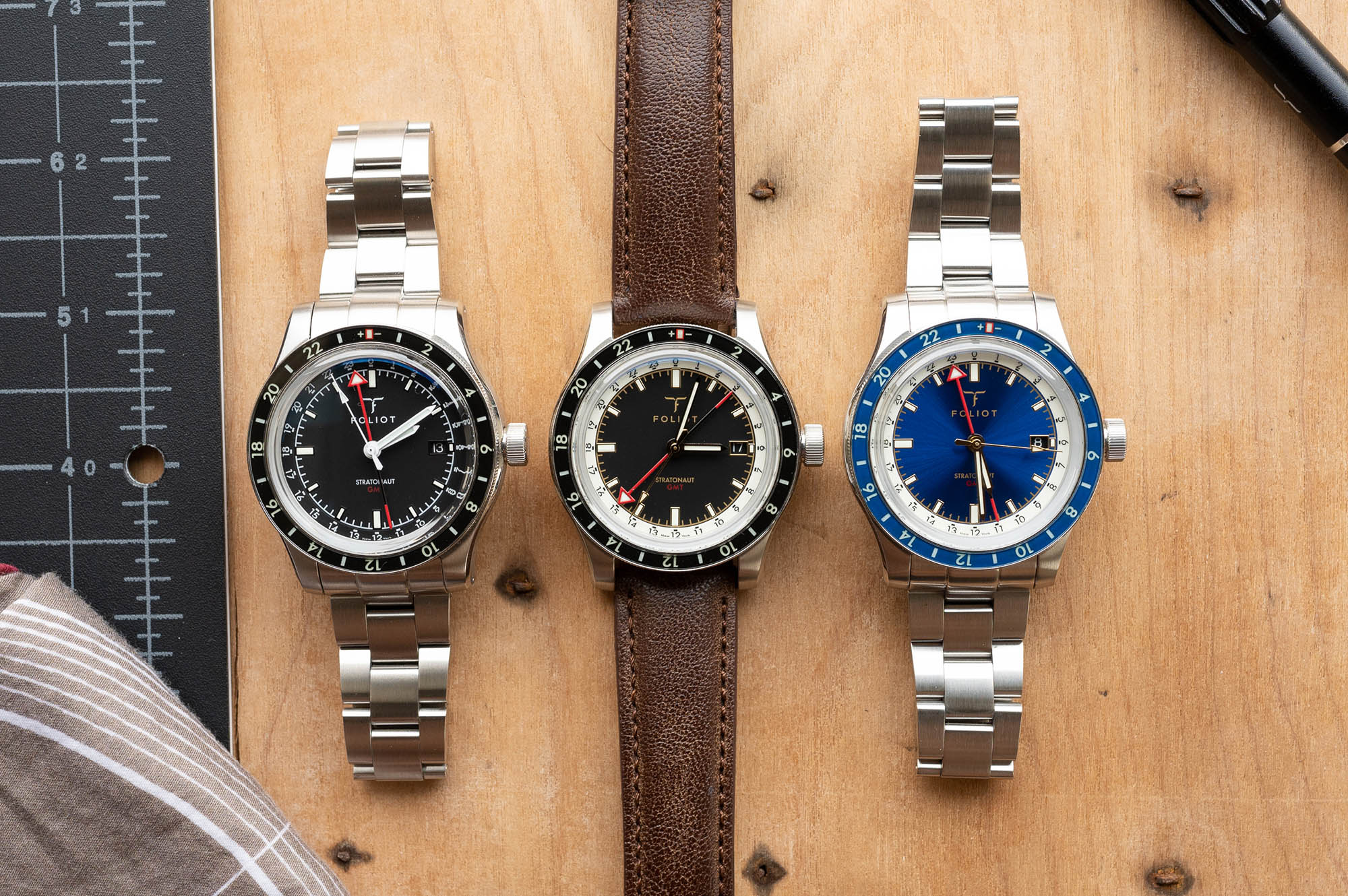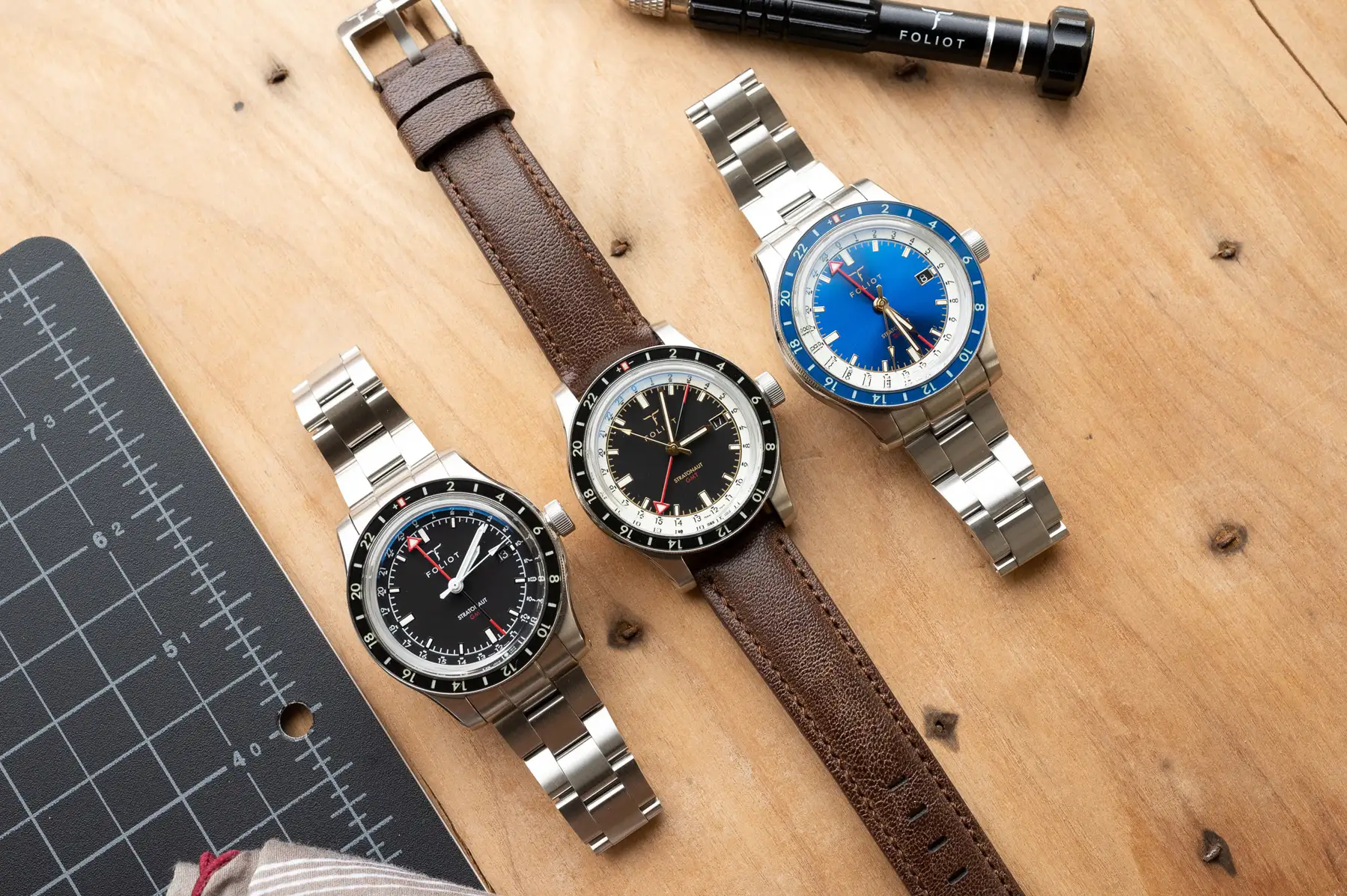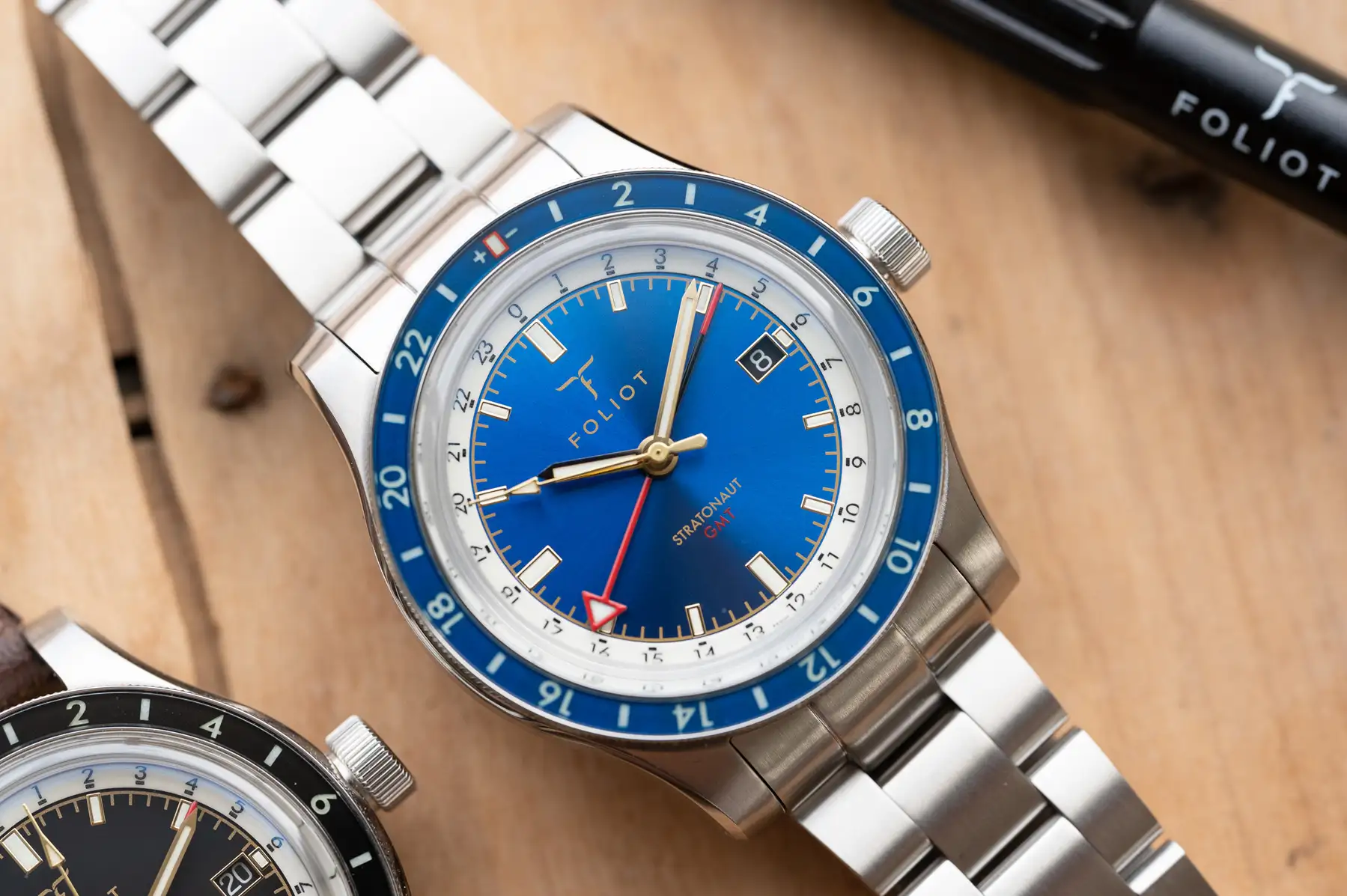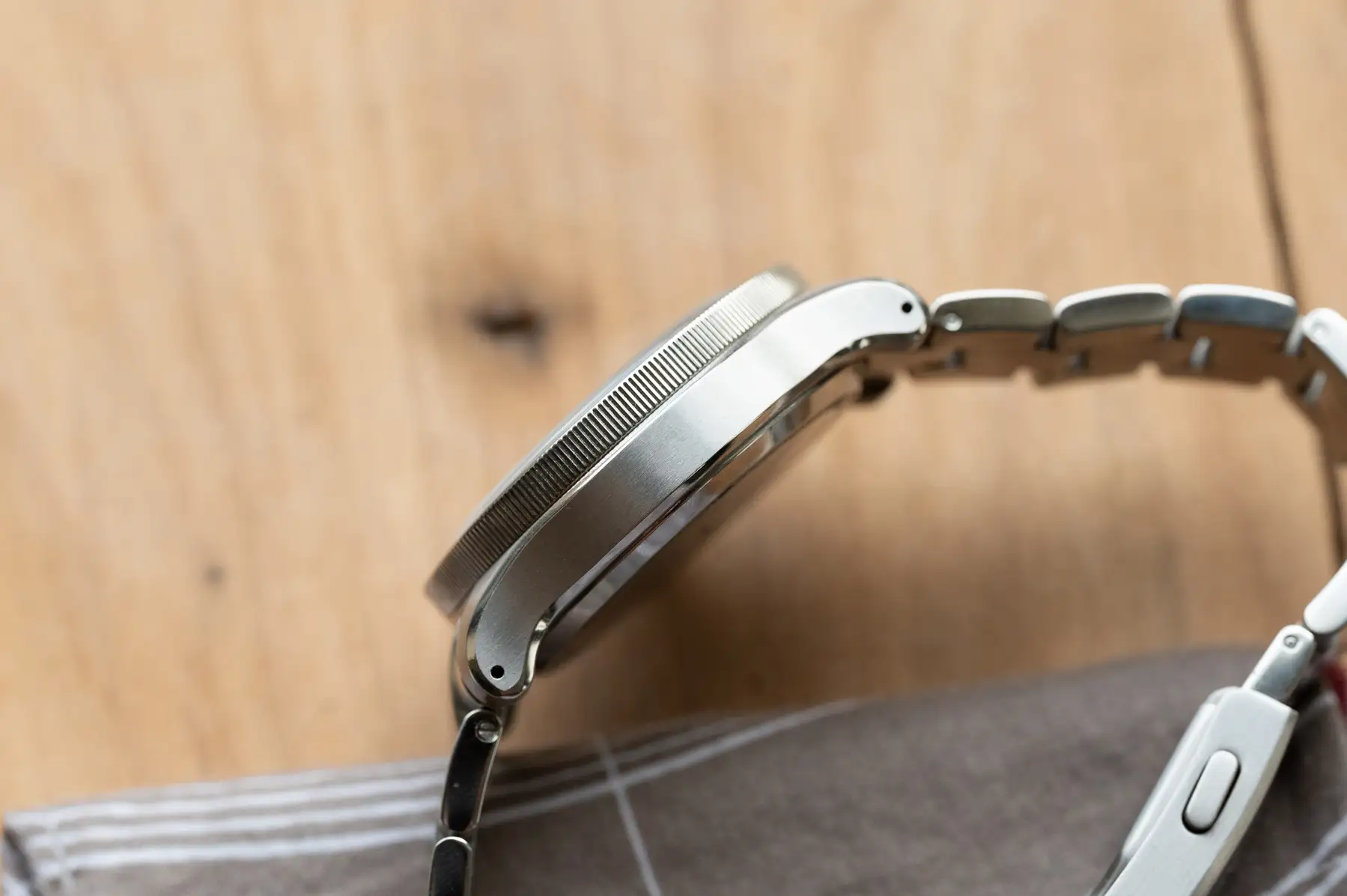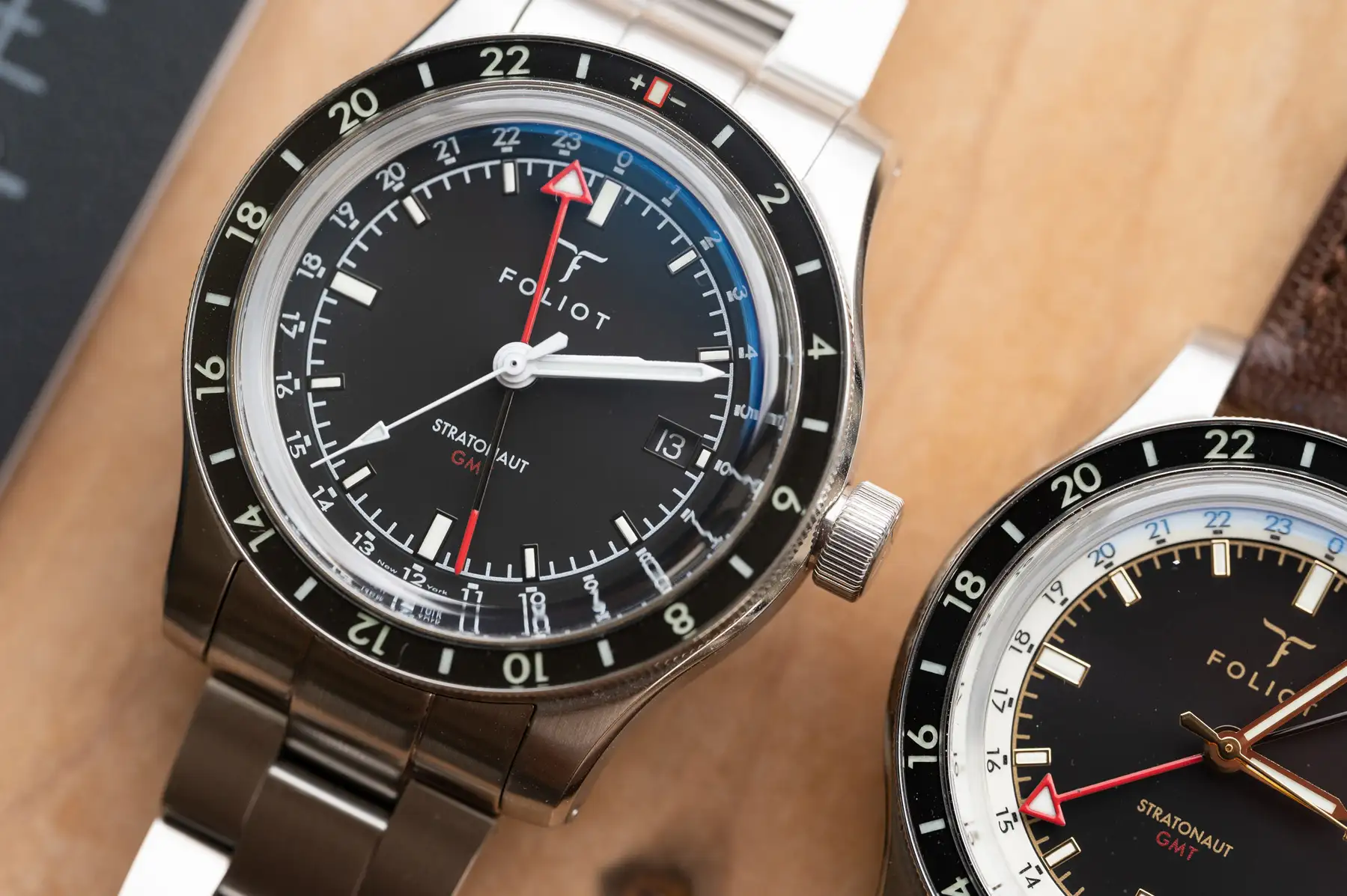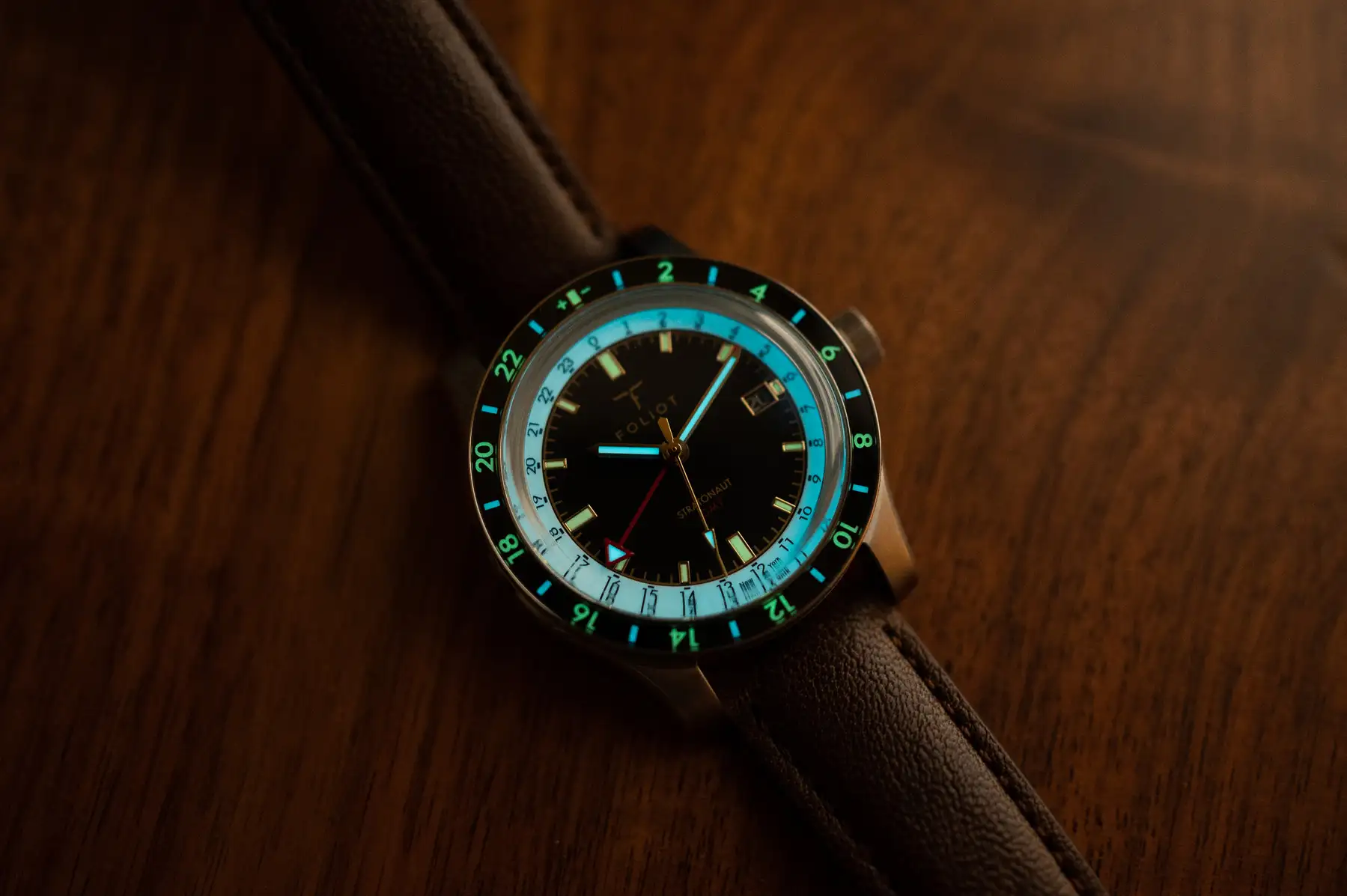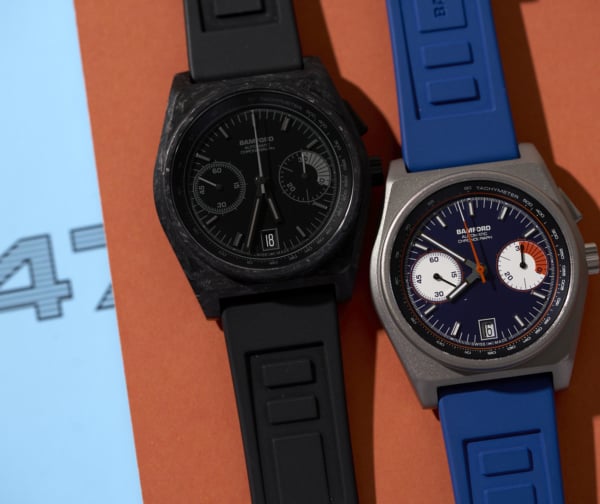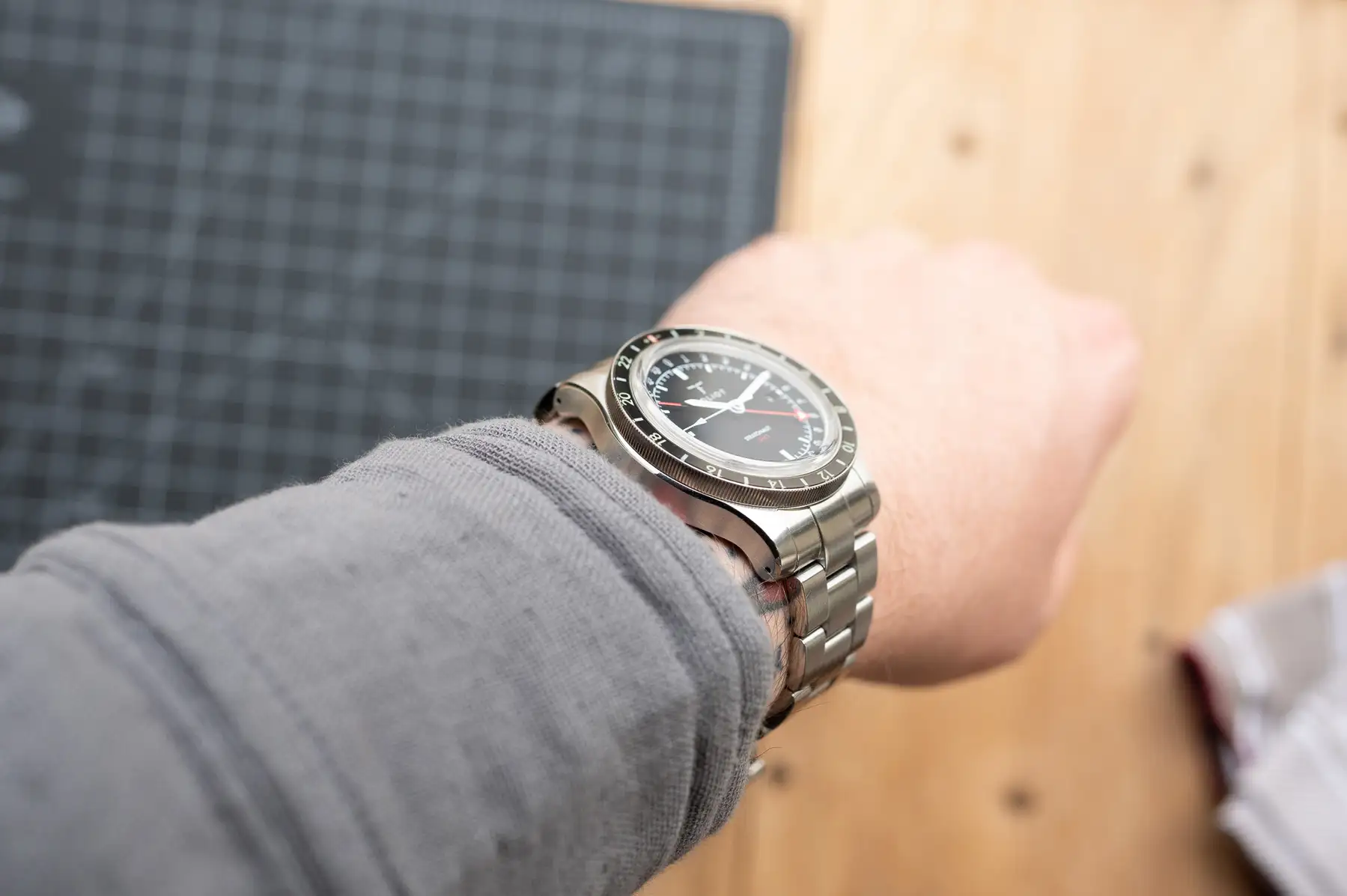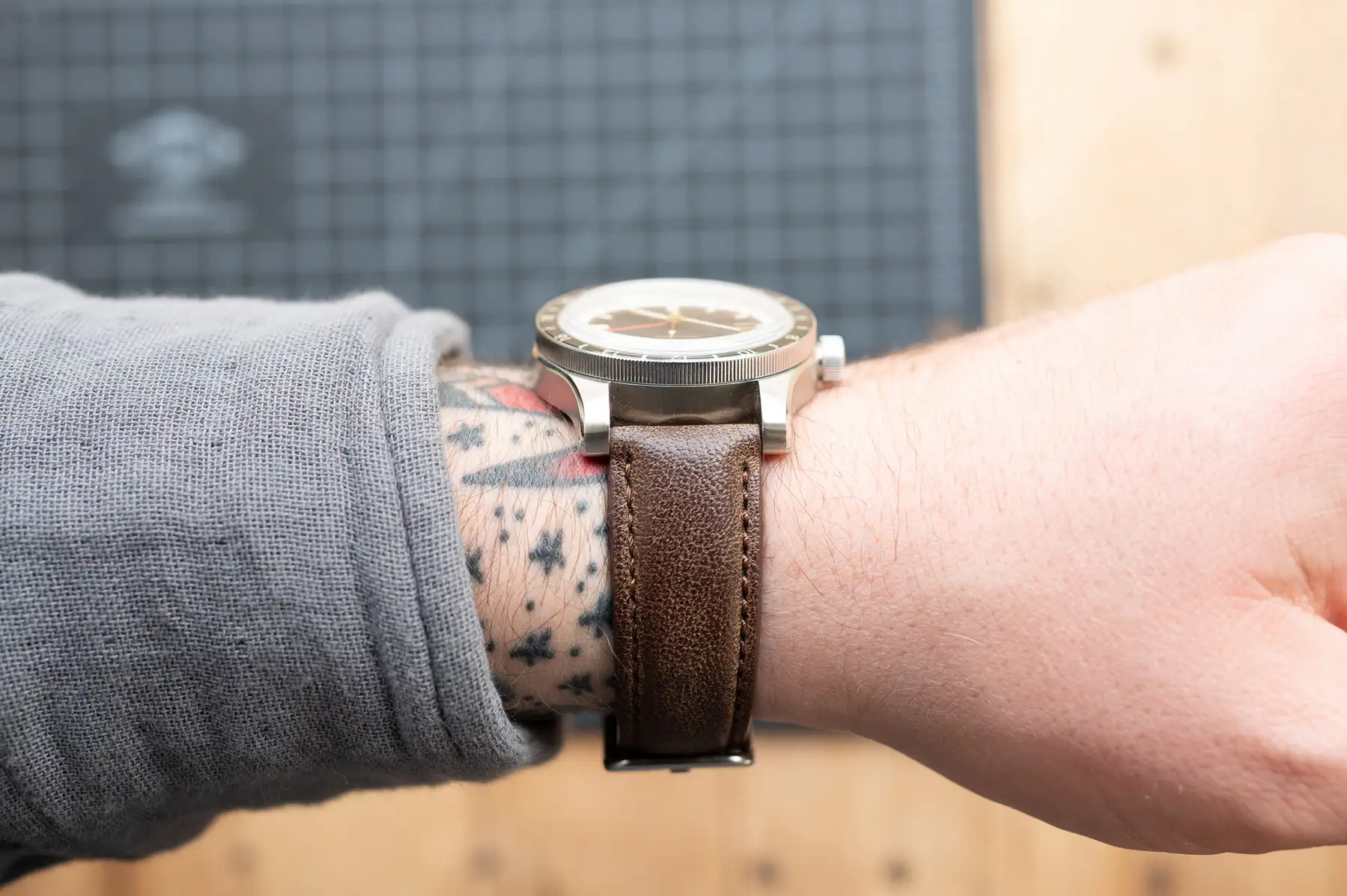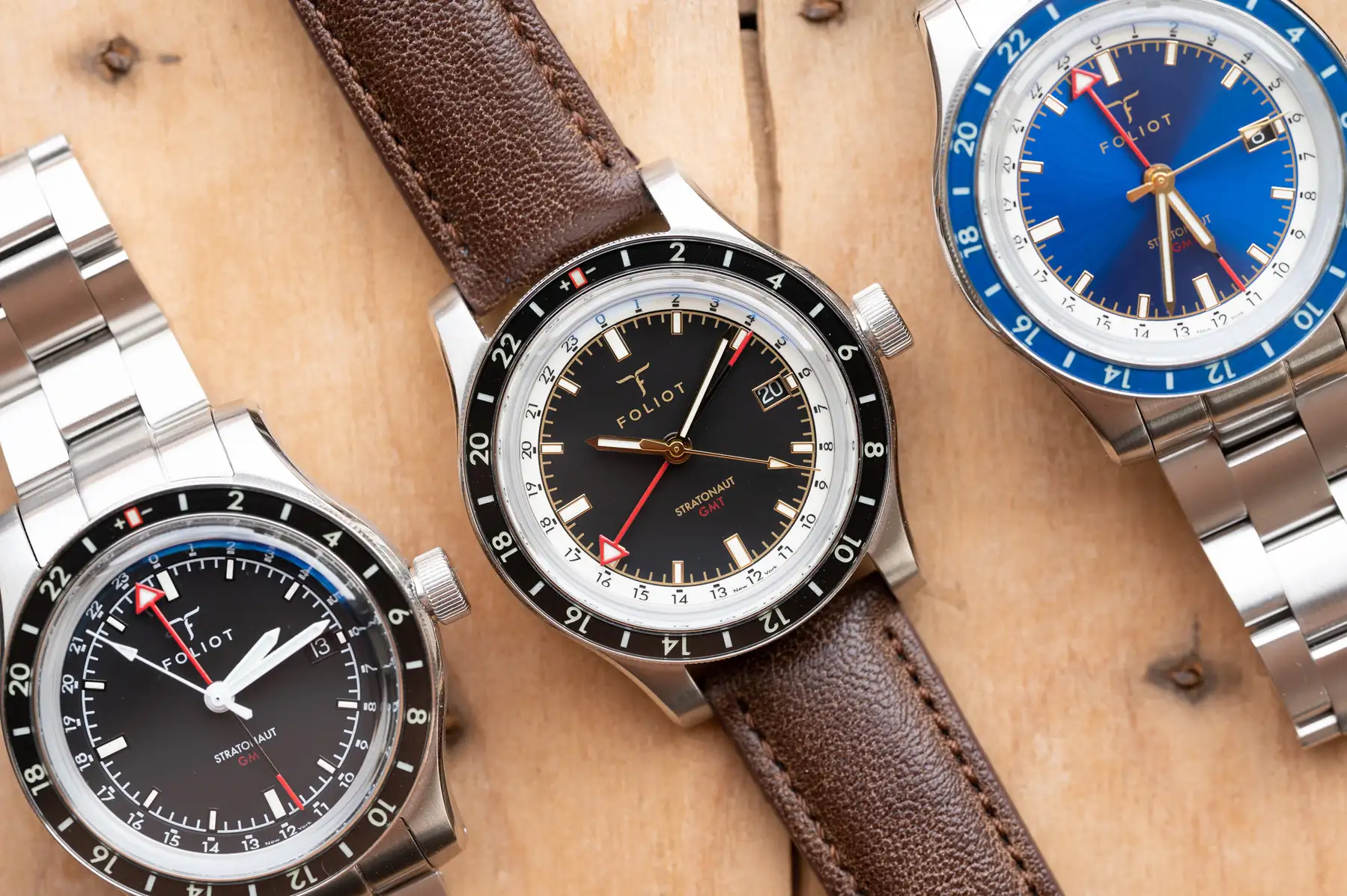Dial + Hands
![]()
There’s a lot going on with the dial and hands, since the Stratonaut is technically capable of tracking five time zones between the main hands, the dual-tipped GMT hand, and the rotating bezel. I think it’s an exaggeration to say five time zones, and that’s because of the dual-tipped GMT hand. Technically, it can track five, provided that two of the time zones you’re interested in tracking are 12 hours behind the one you’re clocking with the dedicated GMT hand. It’s not the most useful function, and it adds some extra clutter to what I would already consider a pretty busy dial. Since there is a lot to cover, let’s start from the outside and work our way in.
![]()
Surrounding the dial is a bi-directional bezel with 24-hour markings. You can use this bezel in conjunction with the GMT hand to track a time zone (and its 12-hour opposite, thanks to that dual-sided hand). When the lights go out, this lumed sapphire bezel puts on quite the light show, allowing you to wake up in the middle of the night on your trip and panic about what time it is back home. Moving into the dial, you’ll find another 24-hour scale, but this time it’s fixed. The GMT hand will be pointing to this scale most directly, making it the easiest to refer to. Take another step in, and there’s a set of applied indices that are treated with green C3 SuperLuminova with a minute scale running in between. Finally, there’s the Foliot logo and wordmark at 12, balanced by the model name and “GMT” at six.
![]()
The handset is a pretty straightforward set of pencils, each treated with lume inside. I’ve mentioned the dual-tipped GMT hand a few times already but failed to mention that the main point is a lumed triangle, while the opposite end is a red-tipped point. I’ve found the hands to be bold enough to read at a glance, and the lume treatment is quite nice, making it legible at night.
Nothing jumps out as out of place on the Foliot’s dial. The design is classic, with rectangular indices, conservative typefaces, and quality execution.









 Featured Videos
Featured Videos




